Choosing the perfect microwave can seem like a daunting task with so many options available in the market. Did you know that the type and wattage of a microwave significantly impacts its cooking efficiency? This blog post is your all-in-one guide to navigate through this maze, outlining everything from types of microwaves, crucial specifications, key features, and how to ultimately make the best choice for your needs.
Get ready to become an informed buyer – let’s simplify your shopping experience!
Key Takeaways
- When choosing a microwave, consider the type that fits your kitchen layout: countertop, over-the-range, or built-in.
- Important specifications to consider are size and dimensions, wattage, and venting options.
- Key features to look for in a microwave include preset cooking times, convection cooking capabilities, sensors for even cooking, inverter technology for precise control, and an easy-to-clean interior.
- Consider factors like your kitchen layout, needs and typical use of the microwave, budget and desired features before making a final decision.
Types of Microwaves
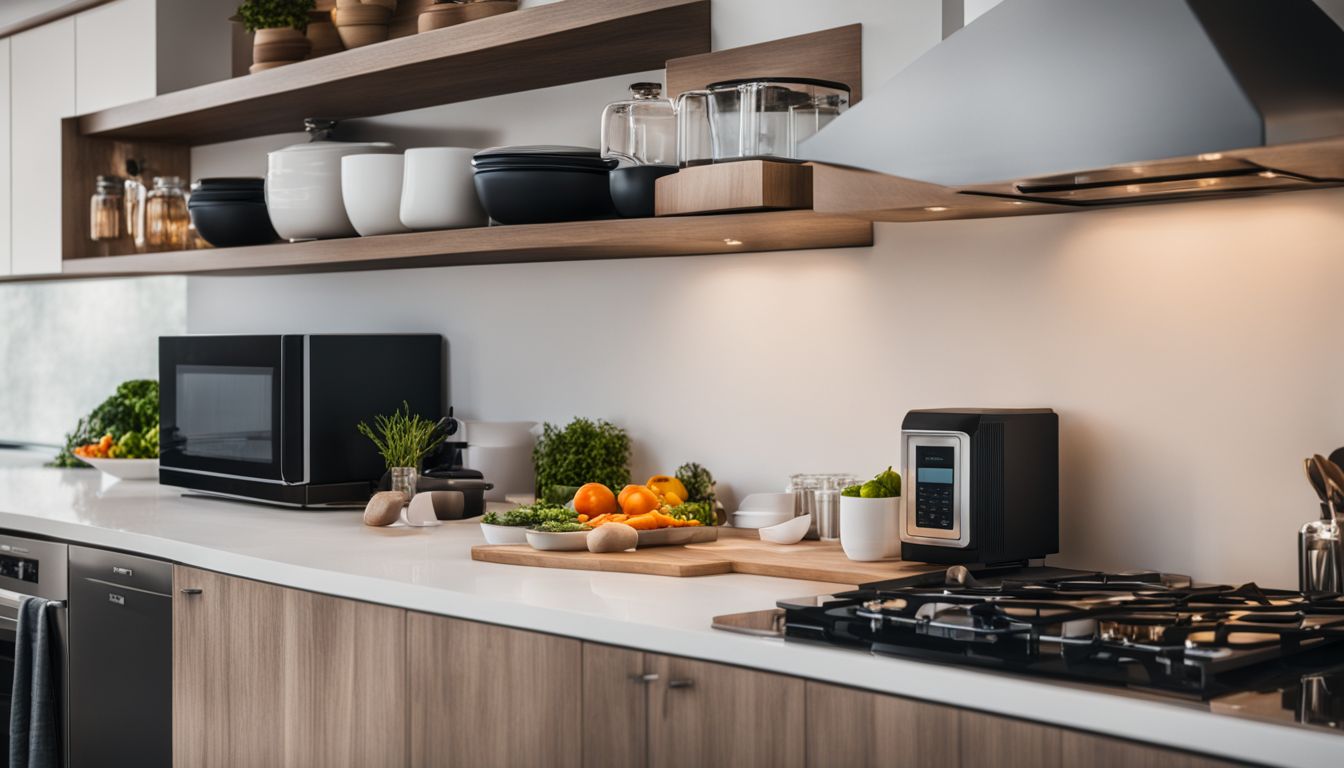
There are three main types of microwaves: countertop, over-the-range, and built-in.
Countertop
 Countertop microwaves are common. They fit well on most open counters in your kitchen. It’s easy to use them too. Just plug it into a power socket.
Countertop microwaves are common. They fit well on most open counters in your kitchen. It’s easy to use them too. Just plug it into a power socket.
You can find many sizes of countertop microwaves. Some are tiny, just 0.5 cubic feet inside. Others are big with over 2 cubic feet of space inside for food. Pick the one that fits best in your kitchen and meets your needs for cooking.
Over-the-Range
 Over-the-Range microwaves can save you a lot of space. They easily sit over your stove or range, fitting in perfectly. This means more room for you on the counter!
Over-the-Range microwaves can save you a lot of space. They easily sit over your stove or range, fitting in perfectly. This means more room for you on the counter!
These types of microwaves are not just about saving space though. They come with cool things like venting abilities and fans built right in! You won’t have to worry about smoke or smells getting stuck in your kitchen.
The best part? There are many different kinds out there. You can get basic models, high-end ones, even those with grills or convection cooking. No matter what you want from your microwave, an Over-the-Range type may be perfect for you!
Built-In
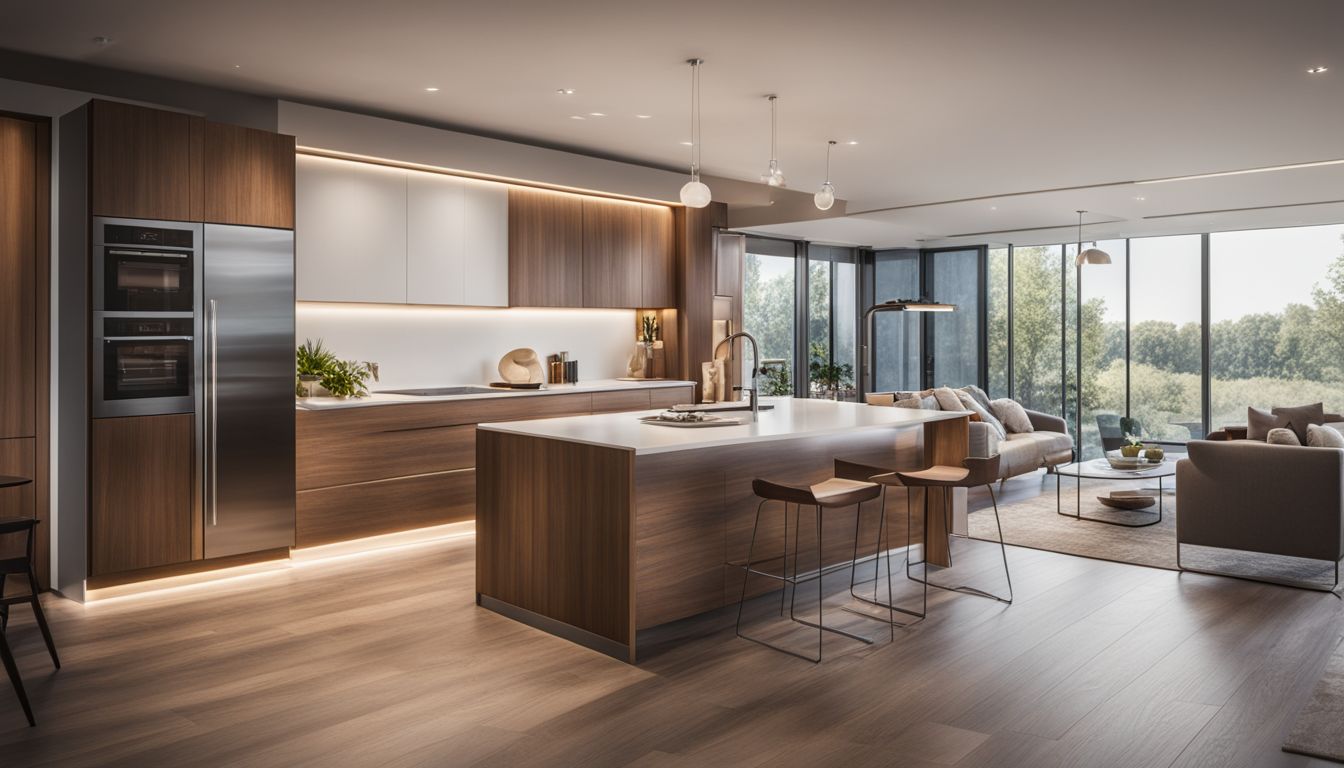 Built-in microwaves give your kitchen a sleek look. They fit right into your cabinet or wall space. This leaves more room on the counter for other things.
Built-in microwaves give your kitchen a sleek look. They fit right into your cabinet or wall space. This leaves more room on the counter for other things.
You should know that built-in microwaves only work as a microwave. Over-the-range models can also act like a hood vent for your stove. But built-ins do not have this feature.
So, check the size and features of a built-in microwave before you buy one. Make sure it fits well in your kitchen layout and meets all your cooking needs.
Important Specifications to Consider

When choosing a microwave, it’s important to consider the size and dimensions, wattage, and venting options.
Size and dimensions

When choosing a microwave, it’s important to consider the size and dimensions. You need to make sure that the microwave will fit in the space you have available. The height, width, and depth of the microwave are key measurements to look at.
You can find guides and size charts online that provide standard sizes for microwaves. Best Buy also has a Microwave Buying Guide on their website with information about convenient features and selecting the right size.
So before you make your purchase, be sure to measure your space and check out these resources to ensure you get a microwave that fits perfectly in your kitchen.
Wattage
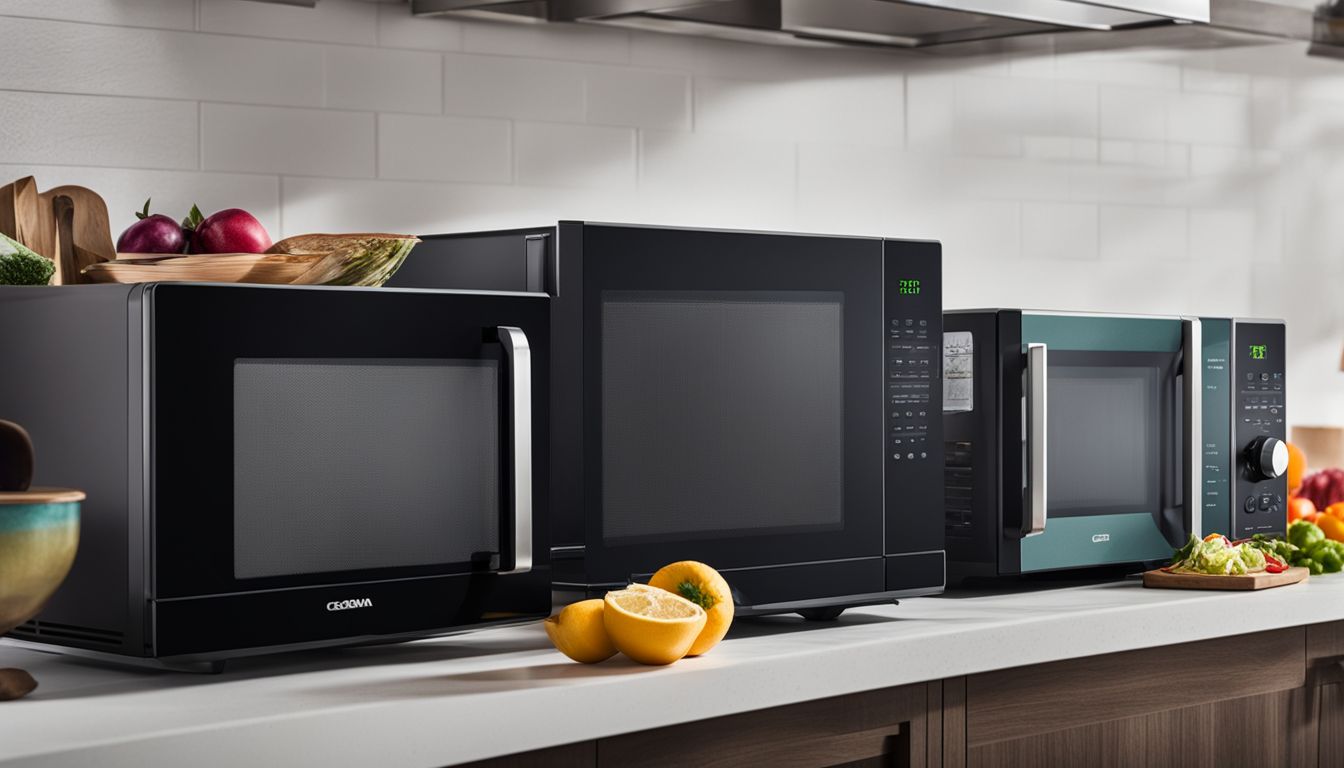
The wattage of a microwave is an important specification to consider when buying one. Wattage tells you how powerful the microwave is and how quickly it can cook your food. Most microwaves have wattages between 500 and 1200 watts.
The higher the wattage, the faster your food will cook. A microwave with around 1000 watts is a good choice for quick and efficient cooking. Microwaves with higher wattages are better suited for cooking more complex recipes or bigger meals because they provide even faster cooking times.
When choosing a microwave, it’s important to consider the wattage that meets your needs. If you often cook large meals or need to heat up things quickly, then a microwave with higher wattage would be ideal for you.
On the other hand, if you mainly use your microwave for reheating small portions or simple tasks like melting butter, then a lower-wattage model may suffice.
Venting options

Over-the-range microwaves come with different venting options to help circulate air and remove odors or steam from your kitchen. These options can include multiple fan speeds and various types of filters.
It’s important to compare the venting options when choosing an over-the-range microwave to make sure it meets your needs. Unlike a standard range hood that is specifically designed for venting, a microwave hood not only cooks food but also offers venting performance.
You can find out about the venting options by referring to the product specifications or user manual of the microwave you’re interested in. Considering these options will help you choose a microwave that not only cooks your food perfectly but also ensures efficient ventilation during cooking.
Key Features to Look For

Look for key features like preset cooking times, convection cooking, sensors, inverter technology, and an easy clean interior. Find out why these features are important in choosing the perfect microwave for your needs.
Read more to make an informed decision.
Preset cooking times

Preset cooking times are an important feature to consider when choosing a microwave. These preset cooking times can make your life easier in the kitchen by automatically setting the right cooking time for different types of food.
For example, if you want to heat up a bowl of soup or defrost some frozen vegetables, you can simply select the appropriate preset option and let the microwave do its thing. This eliminates the guesswork and ensures that your food is cooked just right every time.
Having preset cooking times also saves you time and effort. Instead of manually inputting the cooking time for each dish, you can rely on these presets to take care of it for you. This is especially useful if you’re busy or don’t have much experience in using a microwave.
With just a few button presses, your food will be ready in no time.
In addition to convenience, preset cooking times also help prevent overcooking or undercooking your food. Since these presets are programmed to deliver precise results based on the type of dish, you can trust that your food will be cooked evenly and thoroughly without any guesswork involved.
Convection cooking
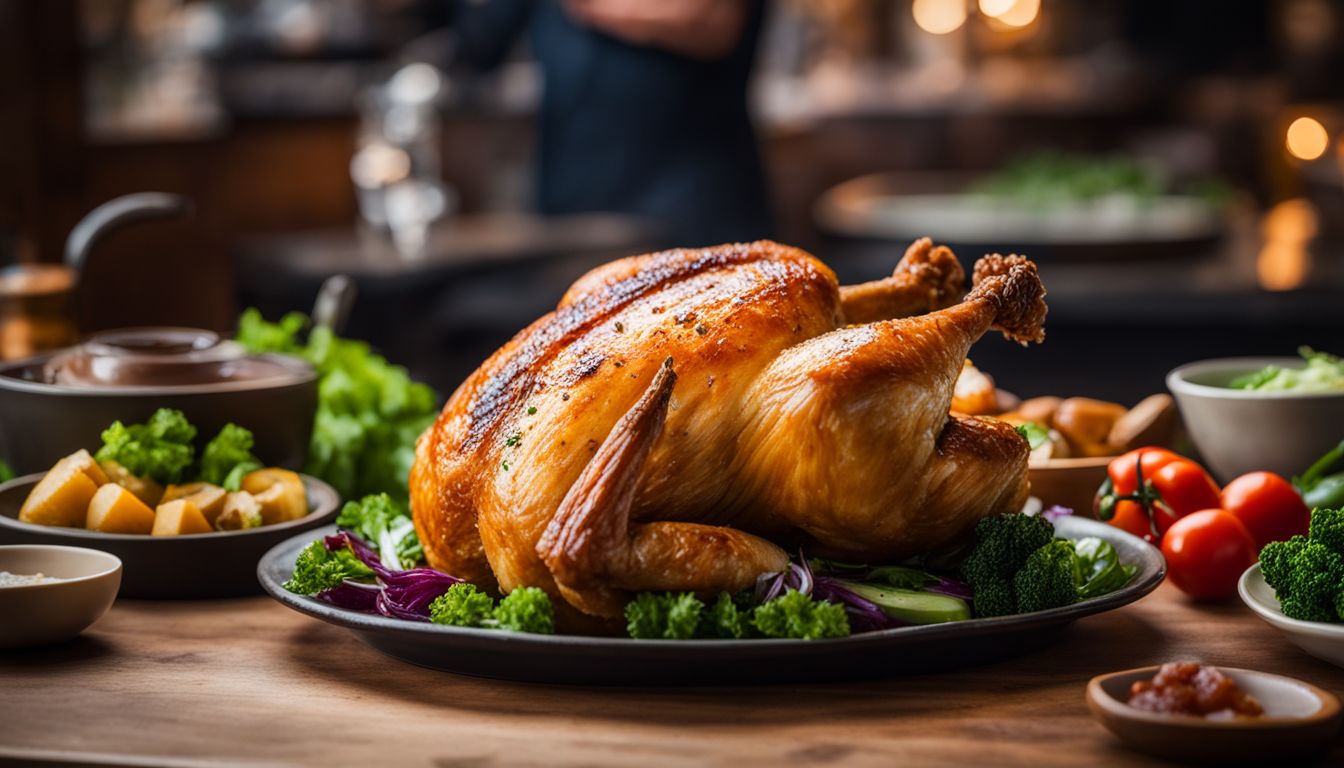
Convection cooking is an important feature to consider when choosing a microwave. It allows for more than just heating up food – you can also bake, roast, and even crisp food. Convection microwaves have an extra heating element and fan that enable this type of cooking.
This means you can enjoy more versatility in your cooking options, like grilling and browning. So if you want a microwave that does more than just heat leftovers, look for one with convection cooking capabilities.
In addition to convection cooking, there are other features to consider when buying a microwave. These include turntables and trays for even heating, quick keys for easy program selection, racks for multiple dishes, shortcut keys for common tasks like popping popcorn or melting butter, child lock for safety, and turntables to prevent hot spots in your food.
Sensors
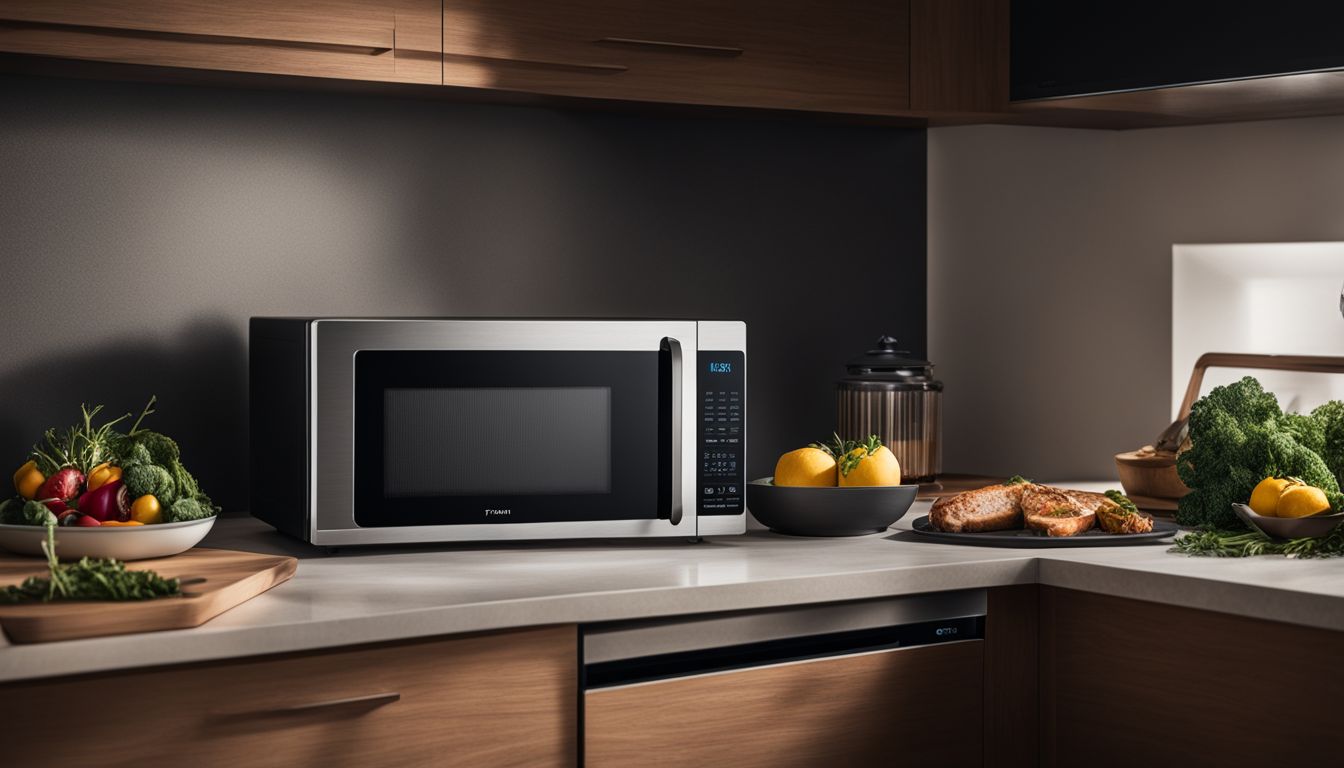
Sensors are an important feature to consider when choosing a microwave. These sensors detect moisture levels and temperature, allowing the microwave to adjust the cooking time and power levels accordingly.
This means that your food will be cooked more evenly and precisely, preventing overcooking or undercooking. The sensors also provide the convenience of preset cooking options, making it easier for you to cook common dishes like popcorn or baked potatoes.
With a microwave that has sensors, you can expect precise and efficient cooking results every time.
Inverter technology

Inverter technology is the newest advancement in microwaves that can make a big difference in your cooking experience. Unlike traditional microwaves, which use on/off pulsing to heat your food, inverter microwaves use advanced technology for more even and efficient cooking.
With inverter technology, you can enjoy precise power control throughout the cooking process.
One of the main benefits of inverter microwaves is their ability to provide consistent and convenient cooking results. Whether you’re reheating leftovers or defrosting frozen food, an inverter microwave will ensure that your meals are evenly heated without overcooking or drying out certain spots.
This means no more cold centers or hot edges!
Additionally, inverter microwaves offer more efficient heating of food compared to traditional models. The precise power control allows for faster cooking times and better preservation of textures and flavors.
And if you’re concerned about power output, rest assured that most inverter microwaves can easily accommodate a 2,000-watt inverter with a peak output of 3,000 watts.
Easy clean interior

An easy clean interior is an important feature to consider when choosing a microwave. It makes cleaning the inside of the microwave quick and convenient. With an easy clean interior, you don’t have to spend a lot of time scrubbing or use harsh cleaning agents.
Simply wipe away any spills or splatters with a damp cloth or sponge, and your microwave will stay hygienic and clean. This is especially beneficial for busy individuals who want to save time and effort in cleaning their appliances.
In addition to saving you time, an easy clean interior also helps maintain the hygiene of your microwave. By keeping the interior clean, you can prevent the buildup of bacteria and food residue that can affect the taste and quality of your meals.
How To Choose The Right Microwave

Consider your kitchen layout, determine your needs and typical use, budget and desired features, trusted microwave brands, and additional factors to consider. Find the perfect microwave for your needs by following these tips!
Consider your kitchen layout
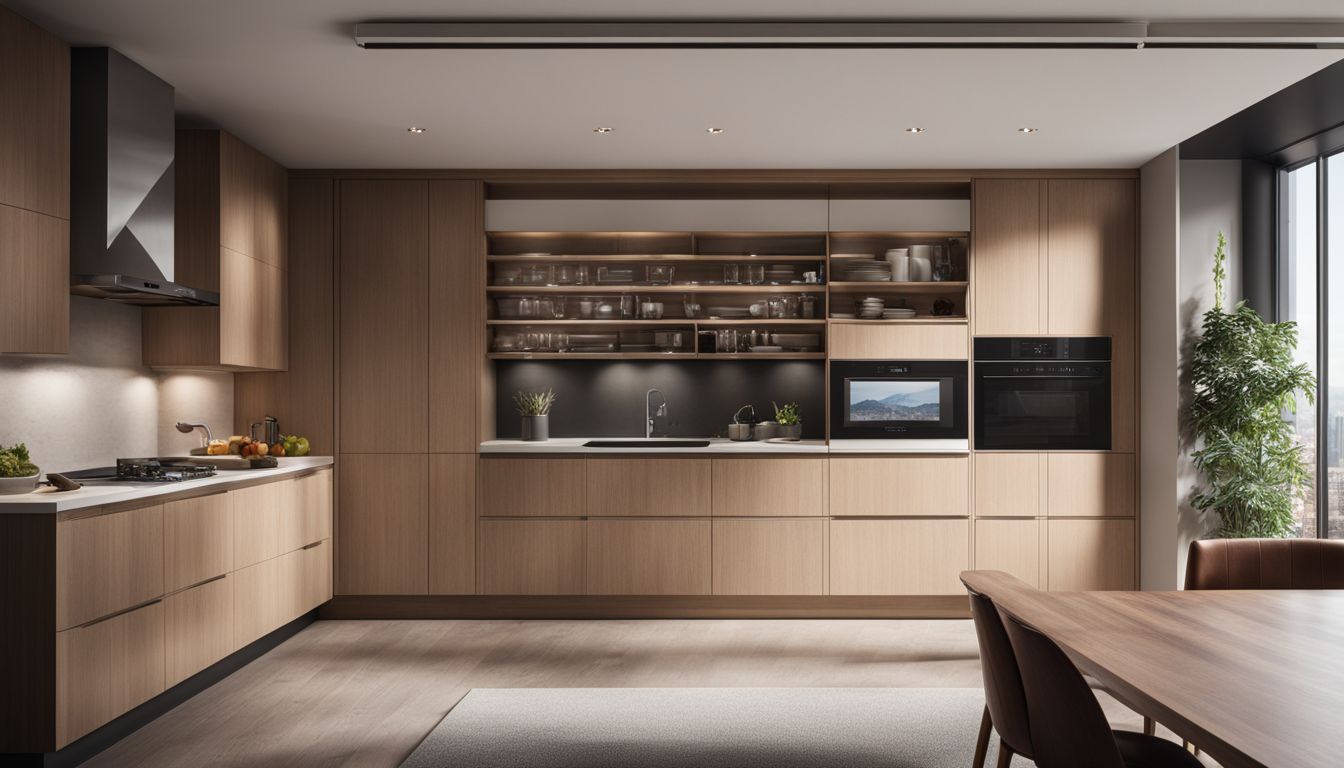
Choosing the right microwave for your kitchen starts with considering your kitchen layout. Take a look at the available space and think about where you want to place your microwave.
If you have a spacious kitchen, a countertop microwave might be suitable because it can easily fit on any flat surface. On the other hand, if you have limited counter space or prefer a sleeker look, you might consider an over-the-range or built-in microwave that can be installed above your stove or into your cabinetry.
Understanding which type of microwave will best fit your kitchen’s layout is the first step in selecting the perfect one for your needs. By taking into account factors like available space and desired placement, you can ensure that your new microwave integrates seamlessly into your kitchen setup.
So before making a purchase, measure the size and style of your kitchen to guarantee that you find the ideal match for both functionality and aesthetics.
Determine your needs and typical use
When choosing a microwave, it’s important to think about what you need and how you’ll use it. Consider the size and features that will be most useful for you. If you have a small kitchen or limited counter space, a compact countertop microwave might be the best option.
On the other hand, if you do a lot of stovetop cooking and want to save space, an over-the-range microwave could work well for you. Think about how often you use your microwave and what tasks you typically use it for.
If you mainly heat up leftovers or make quick meals, a basic model with preset cooking times might be sufficient. However, if you enjoy baking or roasting in your microwave, look for one with convection cooking or inverter technology.
Knowing your needs and typical use will help guide your choice and ensure that the microwave meets your requirements.
Consider additional factors such as budget and desired features when selecting a microwave. Set a budget that works for you before starting your search so that you can focus on models within your price range.
Budget and desired features
Determining your budget is an important factor when choosing a microwave oven. You need to figure out how much you’re willing to spend and what features are a priority for you. Reading a microwave oven buying guide can provide knowledge about different price points and the features that come with them.
This way, you can find a microwave within your budget that meets your desired needs.
In terms of desired features, think about what matters most to you in a microwave. Do you want one with preset cooking times for convenience? Or maybe convection cooking for more even heat distribution? Sensors and inverter technology are also great features to consider as they help with precise cooking.
Additionally, an easy-to-clean interior is something many people value. By knowing what features matter most to you, it will be easier to narrow down your options and choose the perfect microwave for your needs.
Remember, finding the right microwave involves considering both your budget and desired features. Determine how much money you’re willing to spend and then prioritize the features that are most important to you.
Trusted microwave brands
If you’re looking for a reliable and trusted microwave brand, there are a few options to consider. According to Consumer Reports’ tests in 2023, Panasonic is one of the best brands to trust when buying a microwave.
They consistently perform well in terms of cooking performance and durability. Another top choice for over-the-range models are Hotpoint, Ikea, LG, and Monogram. These brands have proven to be reliable and offer quality microwaves that can meet your needs.
When choosing a trusted brand, it’s important to consider factors such as warranty and service availability. You want to ensure that if anything goes wrong with your microwave, you can easily get it repaired or replaced.
Additionally, reading customer reviews can give you insights into the reliability of different brands.
Remember that just because a brand is popular doesn’t necessarily mean it’s the best option for you. Consider your specific needs and budget when making your decision. It’s also worth checking out other reputable sources for recommendations on trusted microwave brands before making your final choice.
Additional factors to consider
Apart from the size, wattage, and key features of a microwave, there are a few more factors to consider before making your final decision. One important factor is the layout of your kitchen.
Consider where you have available space and which type of microwave would fit best in that area. If you have limited counter space, an over-the-range or built-in microwave might be a better choice.
Another factor to think about is your budget and desired features. Determine how much you’re willing to spend and what specific features are important to you. Do you need preset cooking times or convection cooking? Would sensors or inverter technology make your life easier? Consider these factors when comparing different models.
You may also want to look into trusted microwave brands that offer reliable products with good customer reviews. It’s always helpful to do some research and read customer feedback before making a purchase decision.
Conclusion
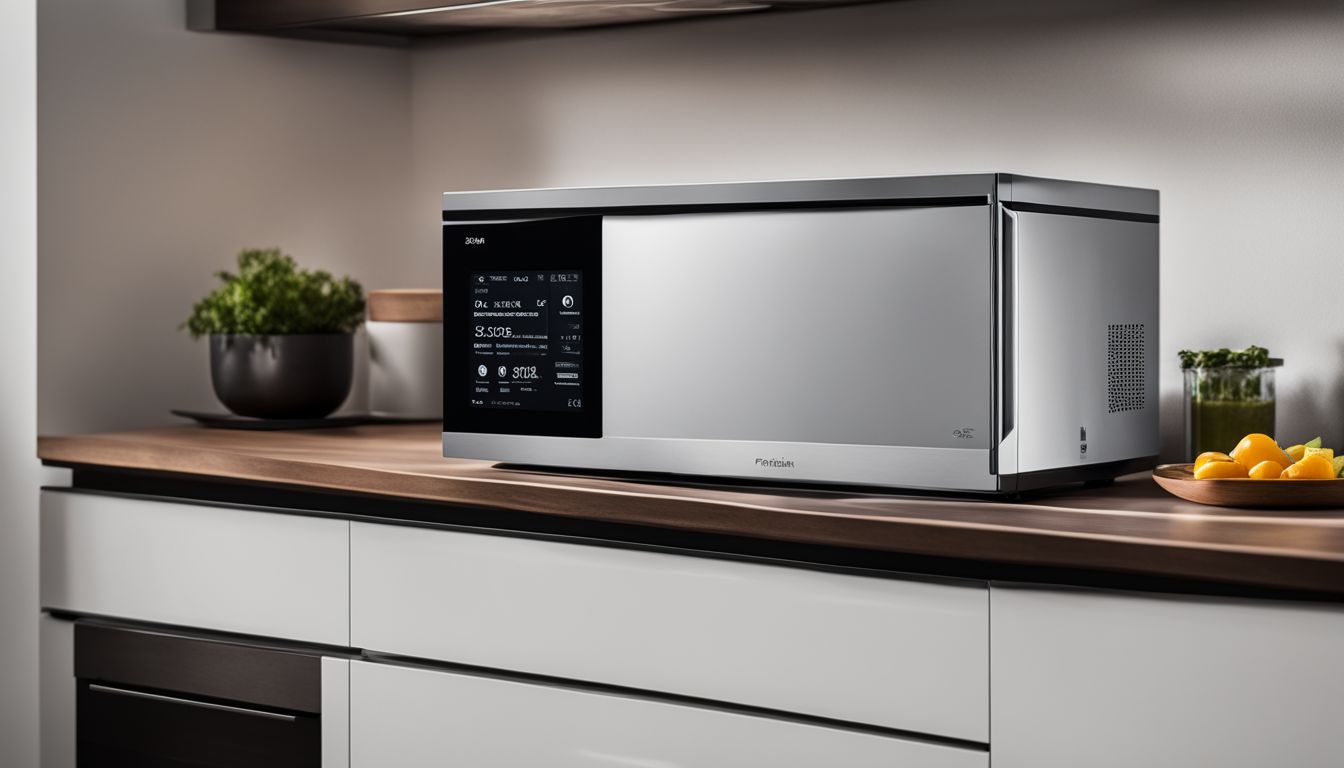
Choosing the perfect microwave for your needs is an important decision. Consider factors like size, wattage, and features to ensure you find one that suits your kitchen layout and cooking preferences.
With the right microwave, you can enjoy convenient and efficient cooking every day.
FAQs
1. What types of ovens can I choose from?
You can choose from gas ovens, electric ovens, convection or conventional systems, compact ovens, and steam ovens. They come in freestanding or built-in designs.
2. What should I think about when picking the size and fuel type for my oven?
When looking at oven size & capacity you need to know your cooking needs. For fuel type, you have choices like natural gas, LPG bottle or electricity.
3. How do smart features help in a microwave?
Smart features include self-cleaning options and timer & delay start settings which add comfort to your kitchen jobs!
4. Which is better: an eye-level or under-counter oven?
The choice between an eye-level or under-counter oven depends on your kitchen’s design and other considerations such as ease of use.
5.What are some must-know topics before buying a microwave?
Must-know topics include warranty & service terms, energy efficiencies like pre-heating and temperature control abilities, running costs over its lifetime maintenance span plus any pros and cons.

